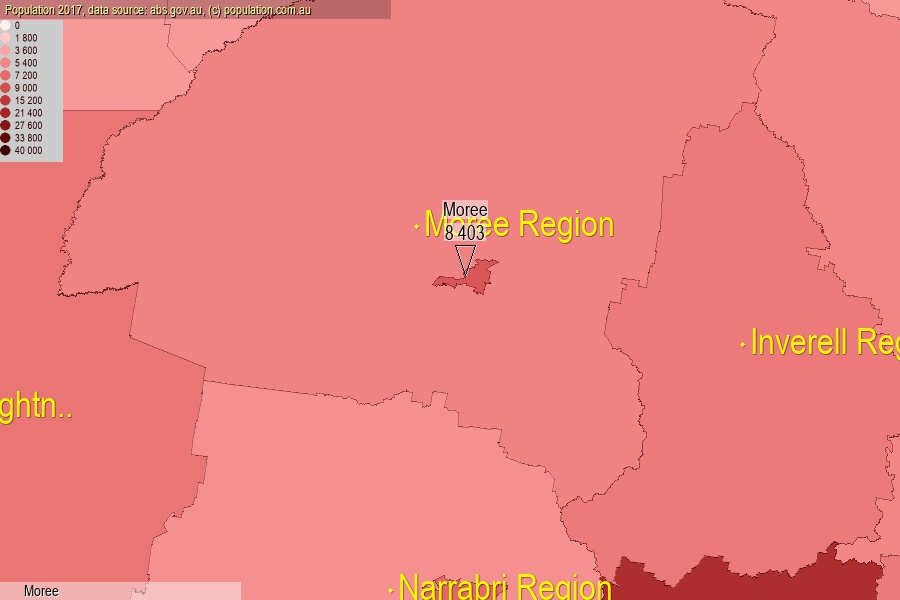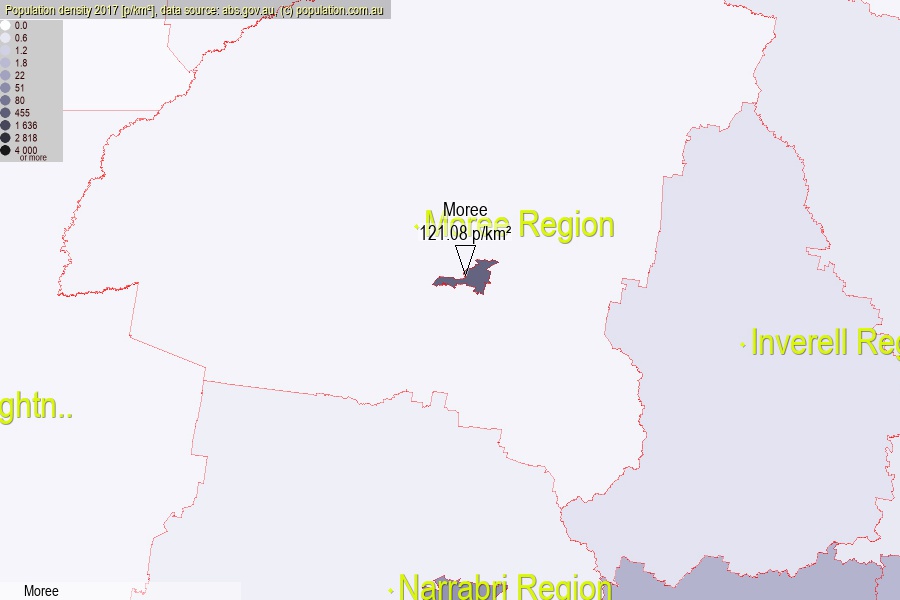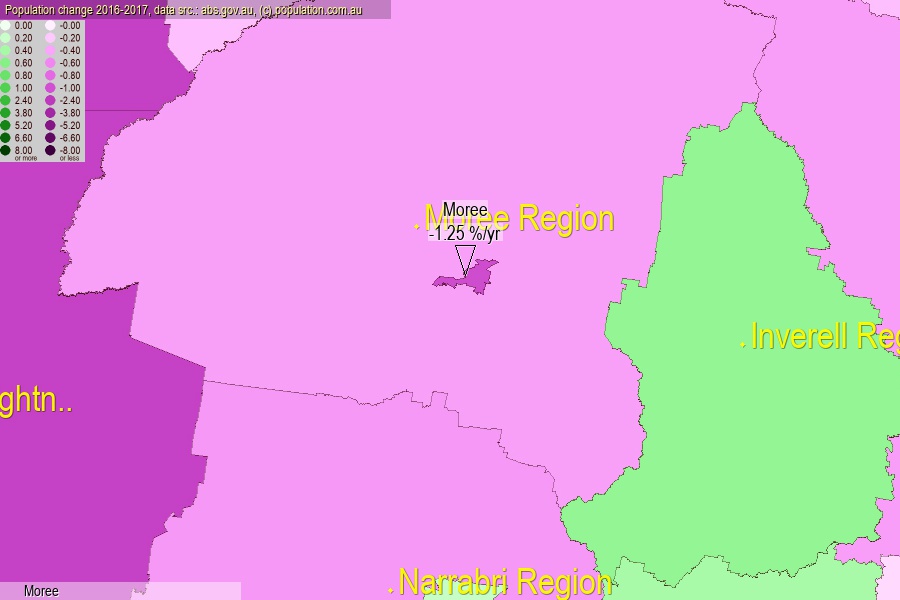 population.com.au
population.com.auLast official estimated population of Moree (as Statistical Area Level 2) was 8 403 people (on 2017-06-30)[2]. This was 0.03% of total Australian population and 0.106% of NSW population. Area of Moree is 69.40 km², in this year population density was 121.08 p/km² . If population growth rate would be same as in period 2016-2017 (-1.25%/yr), Moree population in 2025 would be 7 601. [0]



Click to enlarge. Moree is located in the center of the images.
Population [people], population density [p./km²] and population change [%/year] [2]
View borders » (new window) [4]
[1991-1992] -1.58 %/Yr.
[1992-1993] -1.69 %/Yr.
[1993-1994] -1.24 %/Yr.
[1994-1995] -1.73 %/Yr.
[1995-1996] -1.38 %/Yr.
[1996-1997] +1.05 %/Yr.
[1997-1998] +1.17 %/Yr.
[1998-1999] +1.01 %/Yr.
[1999-2000] +0.97 %/Yr.
[2000-2001] +1.13 %/Yr.
[2001-2002] -1.76 %/Yr.
[2002-2003] -2.28 %/Yr.
[2003-2004] -2.65 %/Yr.
[2004-2005] -2.26 %/Yr.
[2005-2006] -1.99 %/Yr.
[2006-2007] -1.95 %/Yr.
[2007-2008] -0.74 %/Yr.
[2008-2009] -0.68 %/Yr.
[2009-2010] -0.03 %/Yr.
[2010-2011] +0.29 %/Yr.
[2011-2012] -0.53 %/Yr.
[2012-2013] -0.50 %/Yr.
[2013-2014] -0.55 %/Yr.
[2014-2015] -0.92 %/Yr.
[2015-2016] -0.71 %/Yr.
[2016-2017] -1.25 %/Yr.
[0] Calculated with linear interpolation from officially estimated population
[1] Read more about SA2 and Australian Statistical Geography Standard (ASGS) on abs.gov.au
[2] Population data from Australian Bureau of Statistics (Population and density: 2017; change: 2016-2017)
[3] Digital Boundaries: Australian Statistical Geography Standard (ASGS) 2016.
[4] Border coordinates are simplifyed using Ramer-Douglas-Peucker algorithm.